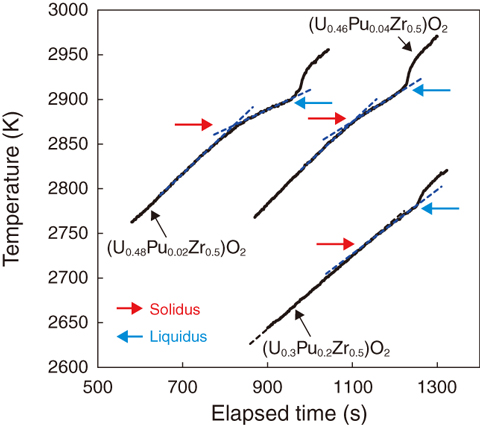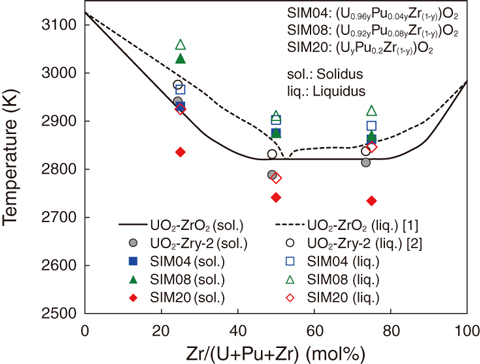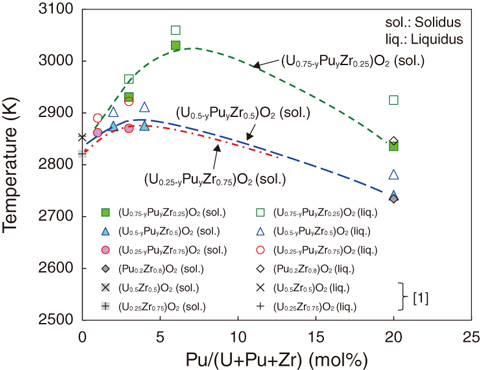
Fig.1-4 Typical heating temperature curves of specimens of (U0.5-y Puy Zr0.5)O2

Fig.1-5 Solidus and liquidus temperatures of sim-debris as functions of Zr-content

Fig.1-6 Solidus and liquidus temperatures of sim-debris as functions of Pu-content
As a part of the decommissioning plan for the reactors damaged at the TEPCO’s Fukushima Daiichi NPS (which was the site of a severe accident), some strategies for removing debris from the reactors and storing it are being discussed. In these considerations, predicting the melt progression during the accident based on theoretical evidence and evaluating the current state of the debris based on its thermal and mechanical characteristics are necessary. The influences of Pu upon these characteristics are important for the prediction because subassemblies of uranium-plutonium mixed oxide (MOX) fuel were loaded into Unit 3 of the plant. Melting temperature is an important thermal characteristic for melt-progression analysis. In addition, it is important for predicting debris states because the central part of the debris is expected to have been in a molten state for a long time owing to its decay heat.
In this study, nine specimens of (U, Pu, Zr)O2 with different chemical compositions were prepared as simulated corium debris (sim-debris). The melting temperatures of the specimens were measured by the thermal-arrest technique described as follows. The specimen was encapsulated in a tungsten capsule in vacuum. This capsule was heated at a constant rate by a high-frequency induction furnace. The temperature of the specimens were measured with a two-color pyrometer sighted on a black-body hole at the bottom of the tungsten capsule. Fig.1-4 shows typical heating-temperature curves of specimens.
The solidus and liquidus temperatures of all specimens are shown in Fig.1-5 as functions of the Zr-content. Examining specimens containing similar Pu-contents in Fig.1-5, the melting temperatures of those containing between approximately 50mol% and 75mol% of Zr seemed to be lower than those with other compositions. From this, it was found that Zr had a similar influence on the melting temperatures of both (U, Pu, Zr)O2 and (U, Zr)O2.
The solidus and liquidus temperatures are shown in Fig.1-6 as functions of Pu-content. The temperatures of (U, Pu, Zr)O2 were higher than those of (U, Zr)O2 at the same Zr-content when the Pu-content was less than approximately 10mol%. In contrast, these temperatures were lower than those of (U, Zr)O2 when Pu-content was 20mol%. From these results, it was found that the solidus and liquidus temperatures of (U, Pu, Zr)O2 had a local maximum value in the Pu-content range between 0 to 20mol%. The results obtained in this study are expected to contribute to the prediction of reactor-core situations and severe-accident analysis.
This topic includes a part of the results obtained under the research program entrusted to the International Research Institute for Nuclear Decommissioning (IRID) by the Agency for Natural Resources and Energy, Ministry of Economy, Trade and Industry of Japan (METI).
<Previous: 1 Research and Development Related to the Accident at TEPCO’s Fukushima Daiichi NPS | Next: 1-2>